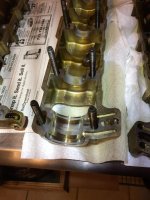Hi guys,
I have been a longtime reader and finally decided to make an account and share my experiences with different oils.
Daily driver:
My daily driver for the past 4 years has been my 2005 bmw e91 325i automatic with the European N52B25 2.5l inline 6 with double VVT, valvetronic variable intake valve height, variable oil pump, two stage intake manifold, electric waterpump, oil/water heat exchanger, magenesium block and with 218 hp out a 2.5l with a 7000RPM redline so all in all this is a pretty high spec engine.
The car now has 223k miles/ 358k km. I have the full service history of the car, this still is the original engine, no works has been ever done to the engine except for regular maintenance and replacement of the VVT solenoids at 155k miles/ 250k km and I replaced the valve cover gasket due to broken alluminum bolts at 211k miles / 341k km.
According to the service history and with my use the car has had its OCI’s every 15.5k miles/ 25k km according to the BMW spec service interval.
This car is driven HARD, sees redline almost every day and is used for a lot of long trips and prolonged 120mph / 180kmh highway driving.
It is however always carefully warmed up for every drive, after startup I always wait about 10 seconds to make sure the oil is flowing every where in the engine, the lambda sensors are warmed up and the ECU’s switches to closed loop.
These engine’s are known for multiple oil leaks, oil consumption due to low piston ring tension, hydraulic tappet ticking, breaking alluminium bolts which need to be used due to the magnesium block, CCV systems failing.
The car has run on the following oils and as a said always with 15.5k / 25k OCI’s:
From new till 97k miles/ 155k km it was serviced at bmw with what I assume was Castrol 5w30 ll04 back then.
From 97k miles/155k km till I bought it at 158k miles/255k km it was serviced at and independent car shop with Total Ineo 5w30 MC3 LL04 approved oil.
From 158k miles/ 255k km till now 223k miles/358k km’s I first changed it with castrol C3 ll04 5w30 for the first 15.5k/25k km because I saw that the oil filler cap said castrol was recommended.
Before the next oil change I found out that around 2013 BMW switched to Shell/penzoil so for the next oilchange I went with Shell Helix AM-L LL04 GTL based oil. (according to MSDS 0-90% fischer-tropsch based base oil, fischer tropsch = GTL process)
The differences:
With Castrol the car used about a quart every 2200 miles 1l per 3500km, when first switched to Shell/penzoil after a couple of months it went to as high as a quart per 600 miles / 1l per 1000km.
I first blamed the shell GTL for it but I found out that the oil filter housing gasket was leaking (common problem on BMW N52 engines). After this the oil consumption stabilized again around a quart per 2200 miles / 1l per 3500km.
After the first oil change with the Shell/penzoil GTL oil I noticed that Shell oil was much more yellowish compared to the almost blood red the castrol oil became after a while, this has to do with the additive pack but maybe also with the GTL base oil which should be almost free of impurities.
I always cut open the oil filter after every service (paper insert filter) and I noticed that with the shell oil the filter was pretty dirty with almost mud/coal like deposits. This did not happen with the castrol filter which came out almost perfectly clean.
For me this tells me that the Shell add pack is really doing a good job cleaning the engine and taking the deposits into the oil filter.
This did not happen only the first time but also the two other times I did an oil change with Shell although it slowly seems to get better so I assume most of the heavy deposits are out.
I also look into the oil filler hole every time I need to add oil and during the use with Shell oil I could see that the engine got cleaner and more and more deposits came loose/broke off the valve cover inside. The reason why the valve cover has accumulated some deposits are because the crankcase ventilation hose was cracked, something I repaired in the beginning after I got the car.
I do notice some small particles in the filter every change, this is also common on the BMW inline 6s of this generation. This has to do with the valvetronic worm motor actuation.
When I changed the valve cover I could see that the gear had some slight wear because motor oil does not really reach it so I assume it comes from this spot. I also had it 2 times in a row that a mahle oil filter failed on me by cracking on the lower edge of the filter element, not sure if this happened while loosening or while operation.
I can not really comment on that the car runs better hot or cold with the Shell GTL oil compared to the Castrol.
It ran about the same on both brands. I can also not really comment on the influence on fuel consumption, for European standards this car always uses allot with its inline 6
Also the oil consumption is about the same on both but this difficult to measure because i do not really have a conisistent daily drive route.
Verdict:
I will keep using shell because I like how well it cleans my engine with the dirty oil filter and I can visually see the valve cover getting cleaner.
I also like how the oil turns yellowish which also keeps the engine looking pretty new compared to the castrol which turned it brownish/reddish. (something I read more on BITOG)
Personally I really think Shell has created a great product line with their GTL base oils because as far as I know GTL should/could be considered as a synthetic, it is almost free of impurities, has better cold flowing properties and because it is made from natural gas which there is in excessive amounts it is pretty cheap I guess.
The prices for Shell in Europe (penzoil in US) are also really competitive compared to some other brands and I think some brands try to look good by sponsoring motorsports events etc… but their oils aren’t really that special. Shell is also one of the largest oil companys in the world and with Ferrari f1 and oem, ducati, bmw, Mercedes and hyuandai so I think they must be doing something well.
I also think that for small companies it is almost impossible to test as good as the large ones are capable with their fleet tests, engine tests, dyno runs, lab test etc….
Unfortunantly in europe there are almost no private sector oil analys labs so I can not obtain those.
I now will probably switch to 9k miles/ 15k km OCI’s because the car now has a pretty high milage.
I am not payed by Shell (however i am from Holland and this is not to bash castrol. Just my 2 cents after a lot of use of this oil.
and this is not to bash castrol. Just my 2 cents after a lot of use of this oil.
This might be a bit longdreaded but hopefully it is usefull.
The VOA comes from a russian forum.
I have been a longtime reader and finally decided to make an account and share my experiences with different oils.
Daily driver:
My daily driver for the past 4 years has been my 2005 bmw e91 325i automatic with the European N52B25 2.5l inline 6 with double VVT, valvetronic variable intake valve height, variable oil pump, two stage intake manifold, electric waterpump, oil/water heat exchanger, magenesium block and with 218 hp out a 2.5l with a 7000RPM redline so all in all this is a pretty high spec engine.
The car now has 223k miles/ 358k km. I have the full service history of the car, this still is the original engine, no works has been ever done to the engine except for regular maintenance and replacement of the VVT solenoids at 155k miles/ 250k km and I replaced the valve cover gasket due to broken alluminum bolts at 211k miles / 341k km.
According to the service history and with my use the car has had its OCI’s every 15.5k miles/ 25k km according to the BMW spec service interval.
This car is driven HARD, sees redline almost every day and is used for a lot of long trips and prolonged 120mph / 180kmh highway driving.
It is however always carefully warmed up for every drive, after startup I always wait about 10 seconds to make sure the oil is flowing every where in the engine, the lambda sensors are warmed up and the ECU’s switches to closed loop.
These engine’s are known for multiple oil leaks, oil consumption due to low piston ring tension, hydraulic tappet ticking, breaking alluminium bolts which need to be used due to the magnesium block, CCV systems failing.
The car has run on the following oils and as a said always with 15.5k / 25k OCI’s:
From new till 97k miles/ 155k km it was serviced at bmw with what I assume was Castrol 5w30 ll04 back then.
From 97k miles/155k km till I bought it at 158k miles/255k km it was serviced at and independent car shop with Total Ineo 5w30 MC3 LL04 approved oil.
From 158k miles/ 255k km till now 223k miles/358k km’s I first changed it with castrol C3 ll04 5w30 for the first 15.5k/25k km because I saw that the oil filler cap said castrol was recommended.
Before the next oil change I found out that around 2013 BMW switched to Shell/penzoil so for the next oilchange I went with Shell Helix AM-L LL04 GTL based oil. (according to MSDS 0-90% fischer-tropsch based base oil, fischer tropsch = GTL process)
The differences:
With Castrol the car used about a quart every 2200 miles 1l per 3500km, when first switched to Shell/penzoil after a couple of months it went to as high as a quart per 600 miles / 1l per 1000km.
I first blamed the shell GTL for it but I found out that the oil filter housing gasket was leaking (common problem on BMW N52 engines). After this the oil consumption stabilized again around a quart per 2200 miles / 1l per 3500km.
After the first oil change with the Shell/penzoil GTL oil I noticed that Shell oil was much more yellowish compared to the almost blood red the castrol oil became after a while, this has to do with the additive pack but maybe also with the GTL base oil which should be almost free of impurities.
I always cut open the oil filter after every service (paper insert filter) and I noticed that with the shell oil the filter was pretty dirty with almost mud/coal like deposits. This did not happen with the castrol filter which came out almost perfectly clean.
For me this tells me that the Shell add pack is really doing a good job cleaning the engine and taking the deposits into the oil filter.
This did not happen only the first time but also the two other times I did an oil change with Shell although it slowly seems to get better so I assume most of the heavy deposits are out.
I also look into the oil filler hole every time I need to add oil and during the use with Shell oil I could see that the engine got cleaner and more and more deposits came loose/broke off the valve cover inside. The reason why the valve cover has accumulated some deposits are because the crankcase ventilation hose was cracked, something I repaired in the beginning after I got the car.
I do notice some small particles in the filter every change, this is also common on the BMW inline 6s of this generation. This has to do with the valvetronic worm motor actuation.
When I changed the valve cover I could see that the gear had some slight wear because motor oil does not really reach it so I assume it comes from this spot. I also had it 2 times in a row that a mahle oil filter failed on me by cracking on the lower edge of the filter element, not sure if this happened while loosening or while operation.
I can not really comment on that the car runs better hot or cold with the Shell GTL oil compared to the Castrol.
It ran about the same on both brands. I can also not really comment on the influence on fuel consumption, for European standards this car always uses allot with its inline 6
Also the oil consumption is about the same on both but this difficult to measure because i do not really have a conisistent daily drive route.
Verdict:
I will keep using shell because I like how well it cleans my engine with the dirty oil filter and I can visually see the valve cover getting cleaner.
I also like how the oil turns yellowish which also keeps the engine looking pretty new compared to the castrol which turned it brownish/reddish. (something I read more on BITOG)
Personally I really think Shell has created a great product line with their GTL base oils because as far as I know GTL should/could be considered as a synthetic, it is almost free of impurities, has better cold flowing properties and because it is made from natural gas which there is in excessive amounts it is pretty cheap I guess.
The prices for Shell in Europe (penzoil in US) are also really competitive compared to some other brands and I think some brands try to look good by sponsoring motorsports events etc… but their oils aren’t really that special. Shell is also one of the largest oil companys in the world and with Ferrari f1 and oem, ducati, bmw, Mercedes and hyuandai so I think they must be doing something well.
I also think that for small companies it is almost impossible to test as good as the large ones are capable with their fleet tests, engine tests, dyno runs, lab test etc….
Unfortunantly in europe there are almost no private sector oil analys labs so I can not obtain those.
I now will probably switch to 9k miles/ 15k km OCI’s because the car now has a pretty high milage.
I am not payed by Shell (however i am from Holland
This might be a bit longdreaded but hopefully it is usefull.
The VOA comes from a russian forum.
Attachments
-
 20201118_141015.jpg147 KB · Views: 606
20201118_141015.jpg147 KB · Views: 606 -
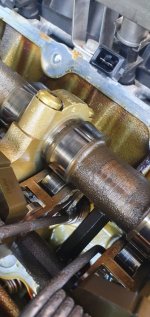 IMG-20200808-WA0013.jpg115.2 KB · Views: 541
IMG-20200808-WA0013.jpg115.2 KB · Views: 541 -
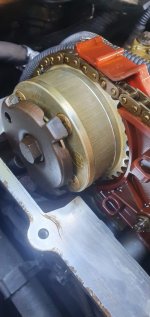 IMG-20200808-WA0017.jpg88.6 KB · Views: 603
IMG-20200808-WA0017.jpg88.6 KB · Views: 603 -
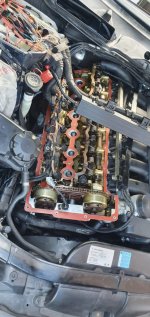 IMG-20200808-WA0022.jpg138.5 KB · Views: 596
IMG-20200808-WA0022.jpg138.5 KB · Views: 596 -
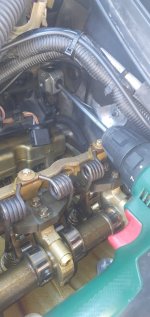 IMG-20200808-WA0009.jpg94 KB · Views: 608
IMG-20200808-WA0009.jpg94 KB · Views: 608 -
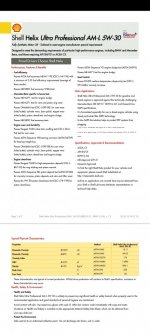 Screenshot_20201118-165847_Adobe Acrobat.jpg98.3 KB · Views: 564
Screenshot_20201118-165847_Adobe Acrobat.jpg98.3 KB · Views: 564 -
 Screenshot_20201118-171050_Gallery.jpg120.9 KB · Views: 577
Screenshot_20201118-171050_Gallery.jpg120.9 KB · Views: 577 -
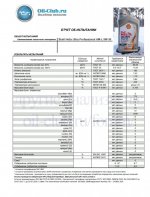 20201118_172229.jpg145.9 KB · Views: 587
20201118_172229.jpg145.9 KB · Views: 587
Last edited:



